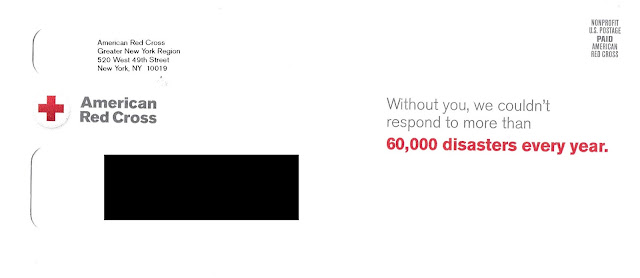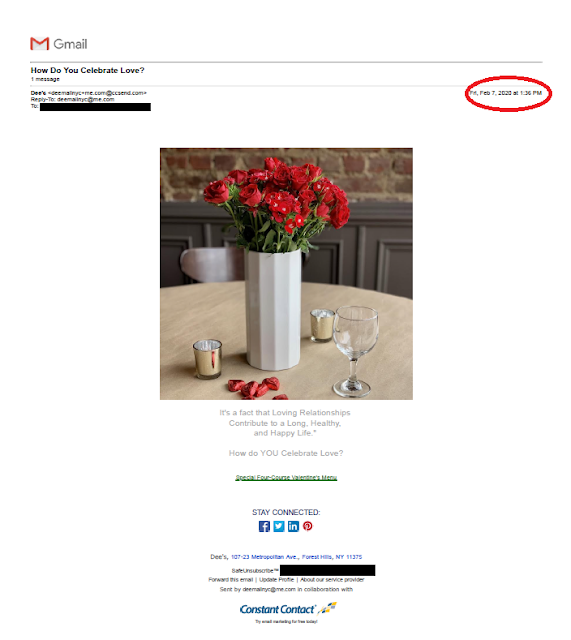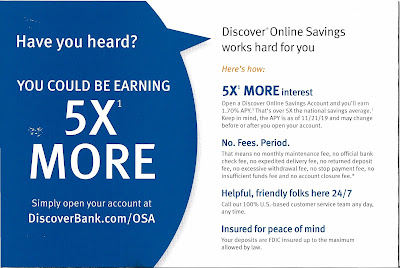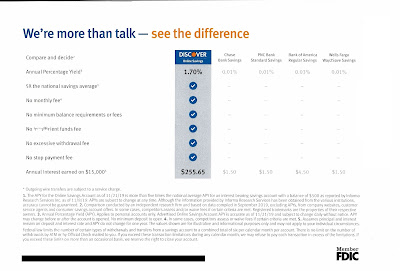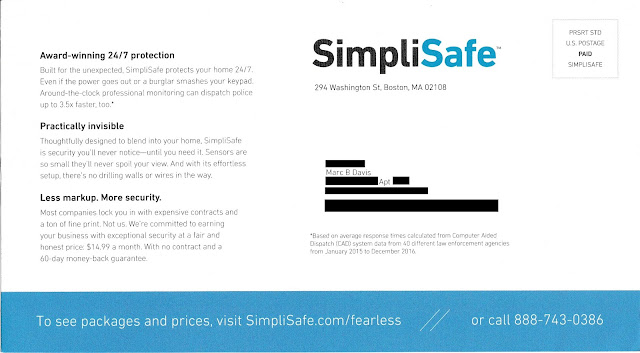Last May, I wrote
about a postcard I received from Santander Bank that merited a Fail forCreative because it promoted an incentive but lacked a conspicuous explanation
of how to earn the incentive.
 |
| Santander Bank self-mailer Cover panel |
 |
| Address panel |
Santander’s small
roll-fold self-mailer that I received on April 2 here in New York City, however, includes
elements lacking in last year’s postcard.
This recent self-mailer includes a clear call to action. In fact, performing
the desired action comes across as easy as 1, 2, 3. The self-mailer includes a
conspicuous explanation of what is required to enjoy the $300 incentive, with
supplemental information in the disclosure. There is adequate space for benefits messaging, an easy-to-read Promotion Code, and the location of the
nearest branch.
 |
| Promotion Code and Bank Branch Location |
However, as I write this, the nearest branch listed on
the postcard has been closed for two weeks because of the COVID-19 pandemic. More than two thousand people in New York City have succumbed to the virus. The Big Apple is in
lockdown. Is this really when a consumer might consider switching the bank where their paycheck is
deposited? Many consumers around here won’t even have a paycheck in a couple
weeks; many others will be deceased.
So, this
self-mailer is a Fail For Timing. At the very least, it can come across as
callous. But should one blame Santander? It could be that the
self-mailer was mailed before things got bad. When mailing Standard Rate, there is a lag time between maildrop and in-home date – sometimes a few business days, sometimes a few weeks. As we’ve seen, the world can change a lot in that short time.
Several years
ago, I launched a direct mail campaign offering prospective customers around Philadelphia savings on their electricity supply costs. Unfortunately, Hurricane Sandy started up the East Coast after the maildrop. The mail reached the target market while the hurricane was
disrupting power to many homes. Who knew?
 |
| Disclosures updated as of 2/29/20 |
The disclosure includes an as-of date of February 29, which suggests
the self-mailer was printed in early March. If it was mailed prior to March 10, I would say, "Who knew?"
Or maybe the mail dropped closer to March 20, which means the bank knew about
the pandemic hitting the United States but decided to mail anyway. If so, a
decision should have been made to pull the mail rather than commit an unforced error because – even though the mail had been printed and personalized – the campaign could have been halted. Doing so would have meant postage money could be
saved for a better timed mailing, and would have prevented bad optics.
Lessons:
- Your Call to Action should be conspicuous and easy to understand.
- Sometimes planned marketing efforts can be impacted by unforeseen events.
- There are occasions when you may need to pull mail at the last minute. Maintain the decision-making capability and flexibility to do so.



